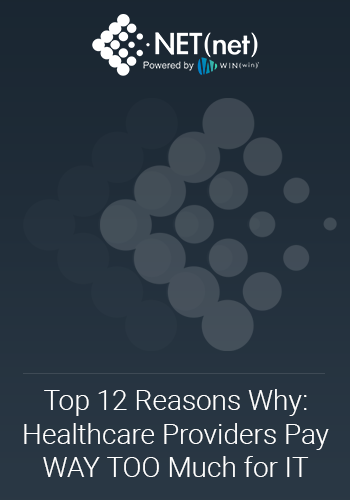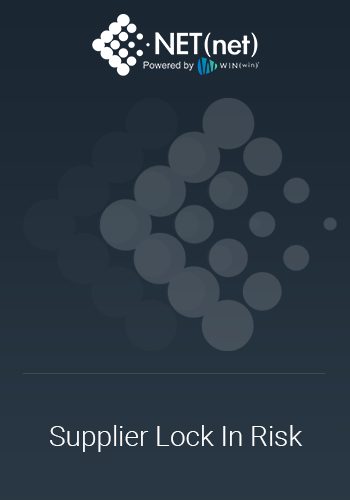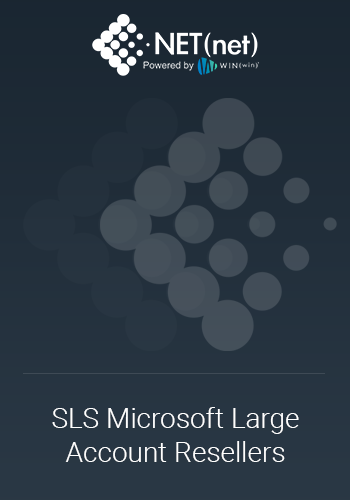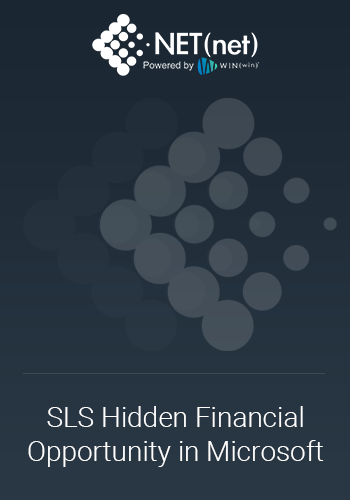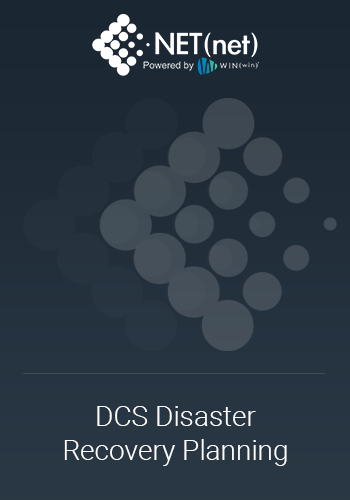Preface:
Thank you for joining us for this 10-part series to discuss the Top 10 Ways You can Save on your Mainframe Costs in 2023.
- Nearly all Clients are Clamoring for Savings in 2023. This is largely due to (a) rising input costs, (b) softening business forecasts, and (c) continued economic headwinds. This has caused many clients to re-evaluate spending plans and implement new cost-cutting targets.
- IT is the Number One Cost Savings Category of the Modern IT is typically the highest indirect spend area for modern enterprises and is also the cost category with the highest potential yield (we average about 33% savings on addressable IT spend). In addition, since 2020, clients have largely exhausted conventional cost savings countermeasures such as canceled projects, delayed spending plans, and cuts in discretionary spending, and many have even gone through Reductions In Force (RIFs), and/or even facility closures. As a result, clients are at risk of cutting muscle and bone this year as cost reduction demands persist, but desperate measures are not necessary when we can help you harvest considerable value from your mainframe supply chain, do so with minimal risk, and perhaps even get additional value including modernization among other benefits.
- NET(net) is the Number One IT Cost and Value Optimization Provider. In the last 20 years, we have shaped over $2 Trillion of investment, captured well over $400 Billion of incremental value for our clients and partners, and have an 85% probability of achieving savings ranging between 13-53%.
Introduction:
When it comes to Mainframes, NET(net) sees incredible savings opportunities in 2023. Not since 2008 has there been as much downward pricing pressure on technology incumbents, and we believe meaningful savings targets can be achieved, but due to the market conditions, technology incumbent suppliers are seeking to increase prices and will be highly disruptive to any cost savings agenda, so it will require a commitment to do the hard work to realize meaningful reductions.
With that as a backdrop, we give you our Top 10 Ways You can Save on your Mainframe Costs in 2023.
In case you missed our previous installments, take a look back at our previous posts:
- Part 0 (Feb 1): Price Benchmark Your Mainframe Costs
- Part 1 (Mar 1): Optimize Mainframe Licensing
- Part 2 (Apr 1): Minimizing MIPS (Millions of Instructions Per Second)
Way #3 of 10: Optimizing MLCs (Monthly License Charges) can result in considerable savings.
Optimizing MLCs (Monthly License Charges) is perhaps the most effective way to minimize costs on the mainframe as the MLCs can often consume 50% or more of the mainframe costs, which can often consume 50% or more of the entire IT budget (especially for client organizations in Banking, Insurance, Government, Healthcare, Retail, and the Travel & Transportation Industries). In this month’s installment, we will discuss how you can optimize your MLCs to reduce your costs on the mainframe.
Optimizing your Monthly License Charges (MLCs) The Monthly License Charges (MLCs) for an IBM Mainframe can be significant, and reducing these costs can be important for many client organizations. Here are some best practices to reduce MLC costs on an IBM Mainframe:
Right-Sizing:
Right-Sizing your mainframe can help you reduce MLC (Monthly License Charge) costs by optimizing the utilization of hardware resources. By right-sizing, you are aligning your hardware resources to your actual workload needs, which can result in several benefits including:
- Reduced software licensing costs: When you right-size your mainframe, you can reduce the number of required software licenses because you are only paying for the software that you actually use. This can help lower MLC costs associated with software charges.
- Reduced hardware maintenance costs: Right-sizing can also help reduce hardware maintenance costs because you are only maintaining the hardware that you actually need. This can help lower MLC costs associated with hardware maintenance charges.
- Improved performance: By right-sizing your mainframe, you can ensure that your hardware resources are optimized for your workload needs, which can help improve performance and reduce MLC costs associated with performance-related charges.
- Reduced energy costs: Right-sizing can also help reduce energy costs because you are only using the energy that you actually need to power your hardware resources. This can help lower MLC costs associated with energy charges.
Overall, right-sizing your mainframe can help optimize the utilization of hardware resources and reduce MLC costs associated with software, hardware maintenance, performance, and energy charges. It is important to regularly review and adjust your approach to ensure ongoing optimization of MLC charges.
Resource Sharing:
Resource sharing on the mainframe can help reduce MLC (Monthly License Charge) costs by optimizing the utilization of hardware resources. By sharing resources among multiple workloads, you can reduce the number of required hardware resources, which can result in several benefits:
- Reduced software licensing costs: When you share resources among multiple workloads, you can reduce the number of required software licenses because you are only paying for the software that is running on the shared resources. This can help lower MLC costs associated with software charges.
- Reduced hardware maintenance costs: Resource sharing can also help reduce hardware maintenance costs because you are sharing the hardware resources among multiple workloads, which means you are only maintaining the hardware that is actually being used. This can help lower MLC costs associated with hardware maintenance charges.
- Improved performance: By sharing resources among multiple workloads, you can ensure that your hardware resources are being used efficiently, which can help improve performance and reduce MLC costs associated with performance-related charges.
- Reduced energy costs: Resource sharing can also help reduce energy costs because you are using the hardware resources more efficiently, which can help lower MLC costs associated with energy charges.
Pro Tip: Consider the use of LPARs (Logical Partitions) to help reduce MLC (Monthly License Charge) costs on a mainframe via:
- Resource allocation: LPARs enable client organizations to allocate resources based on workload importance, avoiding over-provisioning of resources and reducing MLC costs associated with unused or underutilized resources.
- License optimization: LPARs enable client organizations to optimize software licensing by consolidating multiple workloads onto a single LPAR. This can help avoid the need for additional software licenses and reduce MLC costs associated with software charges.
- Capacity planning: LPARs enable effective capacity planning by enabling client organizations to predict future workload demands and allocate resources accordingly. This allows client organizations to avoid over-provisioning of resources and reduce MLC costs associated with unused or underutilized resources.
- Performance optimization: LPARs enable performance optimization by allowing client organizations to isolate workloads from each other and avoid resource contention. This can help improve system performance and reduce MLC costs associated with performance-related charges.
- Flexibility: LPARs provide flexibility by allowing client organizations to add or remove workloads based on their changing needs. This enables client organizations to optimize resource allocation and avoid MLC costs associated with unused or underutilized resources.
The use of LPARs can help client organizations reduce MLC costs by optimizing resource allocation, software licensing, capacity planning, performance optimization, and flexibility. By leveraging LPARs effectively, client organizations can achieve significant cost savings and optimize their mainframe environments to meet their changing needs.
Overall, resource sharing on the mainframe can help optimize the utilization of hardware resources and reduce MLC costs associated with software, hardware maintenance, performance, and energy charges. It is important to regularly review and adjust your approach to ensure ongoing optimization of MLC charges.
Resource Capping:
Resource capping on the mainframe can help reduce MLC (Monthly License Charge) costs by controlling and optimizing the usage of hardware resources. By setting caps or limits on the usage of CPU, memory, and other resources for each workload, you can ensure that the resources are being used efficiently, which can result in several benefits:
- Reduced software licensing costs: When you cap the usage of resources for each workload, you can reduce the number of required software licenses because you are only paying for the software that is running within the capped resources. This can help lower MLC costs associated with software charges.
- Improved performance: By capping the usage of resources for each workload, you can ensure that the resources are being used efficiently, which can help improve performance and reduce MLC costs associated with performance-related charges.
- Reduced energy costs: Resource capping can also help reduce energy costs because you are using the hardware resources more efficiently, which can help lower MLC costs associated with energy charges.
- Reduced risk of unplanned usage: Resource capping can help avoid unplanned or unexpected usage of resources that can result in higher MLC costs.
Pro Tip: Many client organizations run at least one ‘capped’ LPAR, meaning that the available CPU resources are governed by the Workload Manager (WLM), keeping costs governed by a set limit.
WLM is a subsystem on the mainframe that manages the allocation and control of system resources for various workloads and is responsible for ensuring that each workload is allocated the appropriate amount of CPU, memory, and other system resources based on its priority, importance, and service level agreements (SLAs). WLM uses performance goals and service classes to control the allocation of system resources for each workload.
Performance goals define the expected response time, throughput, and utilization for each workload, while service classes define the priority, importance, and maximum resource usage for each workload. WLM monitors the actual performance of each workload and adjusts the allocation of system resources dynamically to meet the performance goals and service class requirements. WLM also supports various workload management techniques, such as capping, partitioning, and routing, to optimize the allocation of system resources and reduce the MLC (Monthly License Charge) costs associated with software charges. WLM is a critical component of the mainframe environment that helps ensure efficient resource utilization, performance control, and cost optimization.
Overall, resource capping on the mainframe can help optimize the utilization of hardware resources and reduce MLC costs associated with software, performance, energy, and unplanned usage charges. It is important to regularly review and adjust your approach to ensure ongoing optimization of MLC charges.
Software Optimization:
Software optimization on the mainframe can help reduce MLC (Monthly License Charge) costs by identifying and eliminating unnecessary or redundant software components, optimizing the usage of software features, and improving the efficiency of software processing.
Here are some ways that software optimization can help reduce MLCs:
- Removing unused software: Identify and remove any unused or redundant software components to reduce software licensing costs.
- Consolidating software: Consolidate similar software products to reduce the number of software licenses required, thereby reducing software licensing costs.
- Optimizing software usage: Optimize the usage of software features by ensuring that each workload is configured to use only the required software features, reducing the number of software licenses required.
- Improving software performance: Optimize the software processing to improve the efficiency of software usage, reducing the amount of CPU and memory resources required and lowering MLC costs associated with performance-related charges.
- Regularly reviewing software licenses: Regularly review software licensing agreements to ensure that you are only paying for the software that is actually being used, and renegotiate where appropriate.
Overall, software optimization on the mainframe can help reduce MLC costs associated with software licensing, performance, and efficiency. It is important to regularly review and optimize your software environment to ensure ongoing cost control and efficiency.
Utilize Virtualization:
Utilizing virtualization on the mainframe can result in reduced MLC (Monthly License Charge) costs in several ways:
- Consolidation of workloads: Virtualization allows you to consolidate multiple workloads onto a single physical server, reducing the number of physical servers required and lowering MLC costs associated with software licenses, maintenance, and energy consumption.
- Efficient resource utilization: Virtualization enables efficient resource utilization by allowing you to allocate and share system resources, such as CPU, memory, and storage, among multiple workloads. This reduces the amount of unused or idle resources and helps lower MLC costs associated with performance-related charges.
- Reduced downtime: Virtualization can help reduce downtime by enabling quick and easy recovery from hardware failures or disasters. This reduces the impact of downtime on business operations and can lower MLC costs associated with unplanned usage charges.
- Improved scalability: Virtualization enables you to quickly and easily scale up or down your resources to meet changing workload demands. This allows you to avoid over-provisioning of resources and helps lower MLC costs associated with unused or underutilized resources.
- Improved testing and development: Virtualization provides a more efficient and cost-effective way to test and develop applications by allowing you to create virtual environments that closely mimic the production environment. This can help lower MLC costs associated with testing and development charges.
Overall, virtualization can help optimize resource utilization, reduce hardware and software costs, improve availability and scalability, and provide a more efficient environment for testing and development. By leveraging virtualization, client organizations can reduce MLC costs and achieve significant cost savings on the mainframe.
Sub-Capacity Licensing:
Sub-capacity licensing is a licensing model offered by most of the mainframe ISVs (Independent Software Vendors) that allows client organizations to pay for software based on the actual usage of the software, rather than on the maximum capacity of the mainframe server. This can help reduce MLC (Monthly License Charge) costs in several ways:
- Reduced software costs: Sub-capacity licensing allows client organizations to pay for software licenses based on the actual usage of the software, rather than on the maximum capacity of the server. This can result in significant cost savings by reducing the amount of software licensing required.
- Improved resource utilization: Sub-capacity licensing encourages efficient resource utilization by allowing client organizations to allocate and share system resources among multiple workloads. This reduces the amount of unused or idle resources and helps lower MLC costs associated with performance-related charges.
- Improved scalability: Sub-capacity licensing enables client organizations to quickly and easily scale up or down their resources to meet changing workload demands. This allows them to avoid over-provisioning of resources and helps lower MLC costs associated with unused or underutilized resources.
- Simplified licensing: Sub-capacity licensing simplifies licensing by providing a more flexible and transparent way to pay for software. It eliminates the need for complex calculations and estimation of software usage, which can help reduce licensing errors and administrative costs.
Overall, sub-capacity licensing provides a more cost-effective way to pay for software on the mainframe by aligning software costs with actual usage. This helps client organizations to optimize resource utilization, reduce software costs, and achieve significant cost savings on the mainframe.
Workload Optimization:
Effective monitoring and management tools are crucial to managing peak usage on a mainframe so that workloads can be optimized. Here are some examples of tools that can help:
- Performance monitoring tools: These tools provide real-time monitoring of system performance and resource utilization, helping to identify potential bottlenecks and optimize resource allocation.
- Capacity planning tools: These tools help predict future workload demands and capacity requirements, enabling client organizations to plan and allocate resources effectively to meet peak usage requirements.
- Workload management tools: These tools enable the efficient management of multiple workloads, allowing client organizations to prioritize and allocate resources based on workload importance and criticality.
- Automation tools: These tools help automate routine tasks and processes, enabling faster response times and reducing manual errors.
- Incident management tools: These tools provide real-time incident detection and response capabilities, helping to minimize downtime and ensure service availability during peak usage periods.
- Reporting and analytics tools: These tools provide detailed reporting and analytics capabilities, enabling client organizations to identify trends, optimize resource usage, and plan for future peak usage periods.
Overall, an effective combination of monitoring and management tools is necessary to manage peak usage on a mainframe effectively. These tools help client organizations optimize resource allocation, minimize downtime, and ensure service availability during peak usage periods.
Utilize IBM Savings Programs:
IBM offers several savings programs that can help client organizations reduce MLC (Monthly License Charge) costs, such as the Enterprise Software Subscription (ESS) program. Here's how ESS can help:
- Reduced software costs: ESS is a subscription-based licensing program that allows client organizations to pay for software on a yearly or monthly basis, instead of paying for software licenses upfront. This can help reduce the initial cost of software acquisition and lower ongoing MLC costs.
- Flexible licensing options: ESS offers flexible licensing options that enable client organizations to add or remove software products based on their changing needs. This allows client organizations to avoid over-provisioning of software licenses and reduce MLC costs associated with unused or underutilized licenses.
- Simplified licensing management: ESS simplifies software licensing management by consolidating multiple software licenses into a single contract. This eliminates the need for separate contracts for each software product and simplifies licensing administration, reducing administrative costs and errors.
- Predictable software costs: ESS provides predictable software costs by providing a fixed subscription fee for each product. This enables client organizations to budget and plan for software costs more effectively and avoid unexpected MLC charges.
Overall, IBM savings programs such as ESS can help client organizations reduce MLC costs by providing flexible licensing options, predictable software costs, and simplified licensing management. By participating in these programs, client organizations can achieve significant cost savings and optimize their mainframe environments to meet their changing needs.
Conclusion
Optimizing mainframe costs is crucial for reducing overall IT costs and achieving maximum efficiency. One of the best ways to reduce Mainframe costs is by optimizing the use of MLC (Monthly License Charge) software, which is licensed based on the peak usage of the system during a given month. MLC software can be expensive, so reducing its usage can result in significant cost savings. By optimizing MLC costs on a mainframe, you can reduce overall IT costs and achieve greater efficiency, allowing your organization to allocate resources more effectively and focus on its core business objectives.
How Much Can You Save?
By working closely with NET(net) to implement these and other savings strategies as part of our Top 10 Ways to Save on Mainframes, client organizations can reduce their mainframe costs significantly and better align their spending with their actual usage, resulting in a more cost-effective mainframe environment.
- Clients fully committed to mainframe modernization efforts can save 80-90%.
- Clients who are committed to a Mainframe Cost Optimization (MCO) initiative (including workload migrations), but who have limited ability to move applications off the mainframe can still see savings between 32%-60% with full scoped work efforts.
- Clients who are unwilling or unable to consider disruptive strategies, but those that still want to work with us strategically to optimize mainframe consumption and maintenance costs can see savings that range anywhere from 13%-33%.
- Clients who believe they can do this all on their own and those who believe they have all the skills, toolsets, and market & supply side knowledge to get the best outcomes likely have a savings opportunity of 5-15%, but most get only minor or no savings and unfortunately erode the opportunity to get future savings by unknowingly making subtle yet critical mistakes which is why we always strongly recommend working with us as your trusted advisor.
Stay Tuned
Our next installment (4 of 10) in this 10-part series of the Top 10 Ways You can Save on your Mainframe Costs in 2023 is a detailed look at how client organizations can reduce costs by upgrading their mainframe operating environments.
Summary
In all respects, extracting value from the mainframe supply chain in 2023 is not going to be easy as the big iron cartel will not only be wildly disruptive to any cost savings effort, but they will also be implementing their own cost increase agendas. If you're ready to take on the challenge and are dedicated to putting in the hard work with us, Contact Us today to learn more about how we can help you save on your mainframe as well as all your other technology investments or Sign up now for a Savings Cloud subscription, and we will get started on helping you save money right away.
About NET(net)
Founded in 2002, NET(net) is the world’s leading IT Investment Optimization firm, helping clients find, get, and keep more economic and strategic value in their technology supply chains. Over the last 20 years, NET(net) has influenced trillions of investment, captured hundreds of billions of value, and has helped clients cost and value optimize all major areas of IT Spend, including XaaS, Cloud, Hardware, Software, Services, Healthcare, Outsourcing, Infrastructure, and Telecommunications, among others. NET(net) has the experience you want, demonstrates the expertise that you need, and delivers the performance you demand and deserve. Contact us at info@netnetweb.com, visit us online at www.netnetweb.com, or call us at +1 (616) 546-3100 to see if we can help you capture more value in your IT investments, agreements, deployments, and relationships.
NET(net)’s Website/Blogs/Articles and other content is subject to NET(net)’s legal terms, offered for general information purposes only, and while NET(net) may offer views and opinions regarding the subject matter, such views and opinions are not intended to malign or disparage any other company or other individual or group.

